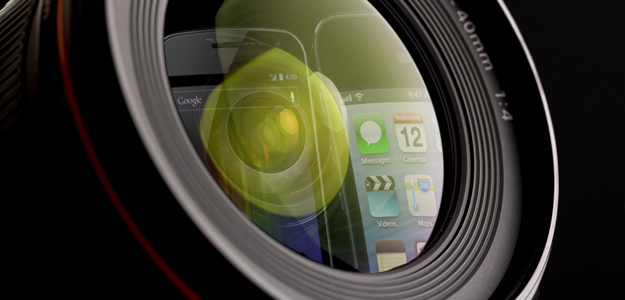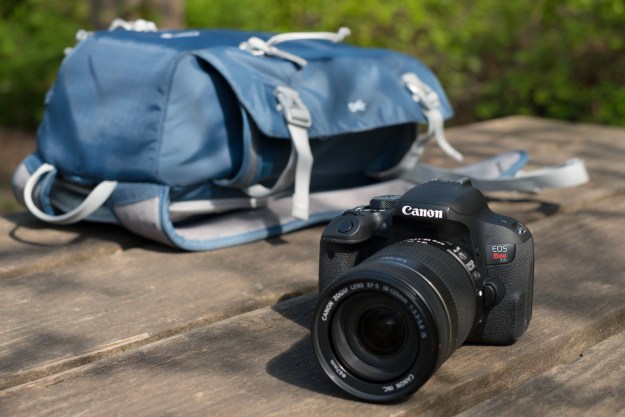

Long Zooms, Large Sensors, and Wi-Fi
Like IDC’s Christopher Chute, Lee shares a similar outlook on what we can expect to see more of in 2013, namely Wi-Fi connectivity, long optical zooms, and larger image sensors.
As more and more people are using their connected smartphones to take photos, it has become important for traditional camera manufacturers to add connectivity to their products.
“Wi-Fi connectivity will make its way into more cameras this year,” Lee said. “In 2012, 23 cameras were announced with Wi-Fi connectivity, almost double the number that were introduced between 2005 and 2011.”
One of the appealing features about smartphone photography is the ability to share a photo immediately after it has been taken, a feature sorely lacking in digital cameras.
“Connectivity needs to be in as many cameras as possible to address the instant-sharing aspect of photography today,” Lee said. “There will be a lot of activity around photo workflow and simple user interfaces. What happens to the picture after it has been captured is going to grow in importance. It has to be simple and easy.”
There are features that are unique to digital cameras, however, that smartphones can’t touch. Lee says we can expect the camera manufacturers to ramp up those features.
“Long-zoom lens will continue to be pushed as a point of differentiation from smartphones, [as well as] smart cameras and apps for cameras; open operating systems in cameras; and point-and-shoot cameras with larger image sensors, like the Canon PowerShot G1 X and the Sony Cyber-shot RX100.”
New Technologies and Trends
As for new technology, Lee says we should keep an eye on computational photography.
“With the power of in-camera processors increasing, more manipulation of the data can happen in the camera, [which] used to require a computer.”

Also, “keep an eye on products like the Lytro camera, but more importantly the sensor and how it might be used in other applications,” Lee added. “Light-field photography is very interesting and I expect that we will see more under the guise of computational photography. Lytro has an interesting product; however, I see more applications for their technology in other imaging fields, like security, medical, etc. These application areas could use the variable focus points in many more ways than consumer photography.”
Another technology that Lee is excited about are wearable cameras, particularly Google’s Project Glass and similar devices. “Wearable cameras could open up a whole new market and usage model, far beyond what the sports/action cameras are doing today.”
In digital camera trends, Lee’s research shows what many of us are already aware of: smartphones are becoming the everyday camera for more people, “while the digital camera becomes more of a household item again.” But talks of the death of the digicam are highly premature.
“The entry-level point-and-shoot camera market still has a place in the future,” Lee said. “They have resolutions and most have optical zooms that exceed smartphones. Smartphones are more convenient to use and carry around, [but] if people are planning on taking photos, they still rely on their cameras. Additionally, the prices for entry-level cameras make them attractive as a gift item. The camera market is going to move toward higher-priced, more-featured cameras, so while unit sales may decline, the average sale price should increase.”
While smartphones are affecting digital camera sales at the low end, higher-end cameras with interchangeable lenses should continue to grow for camera manufacturers, in particular in the Compact Interchangeable Lens Camera (CILC) category.
“The interchangeable lens camera market is where a large percentage of market revenue is going to be coming from,” Lee said.

Lee also sees CILCs (also known as mirrorless cameras or Compact System Cameras) merging with DSLR cameras into one category.
“While there are physical differences between CILCs and DSLRs, I don’t see CILCs creating a separate market,” Lee said. “The buyers and users look very much like DSLR owners today. I believe that in the short run we will move back to talking about one category: Interchangeable lens cameras with the DSLR and CILC segments merging back into the one category.”
Video Camcorders
With more and more digital cameras able to handle high-definition video recording, Lee still sees a market for dedicated video camcorders, “particularly for those instances where the user intends to take longer videos. [Camcorders] are designed to do this and their ergonomics are better in these situations.”
“The market will see some decline, but it has been a relatively small market anyway,” Lee added. “The new 4K or Ultra High Def TV will help the video industry, in that, capture devices like camcorders will need to increase their capture capability to 4K from HD. This will take time since the TVs are still very limited and very expensive, but like all consumer products the prices will come down. 4K capture will be enough reason for many people to upgrade their camcorders.”


